Don’t Let Injury End Your Season
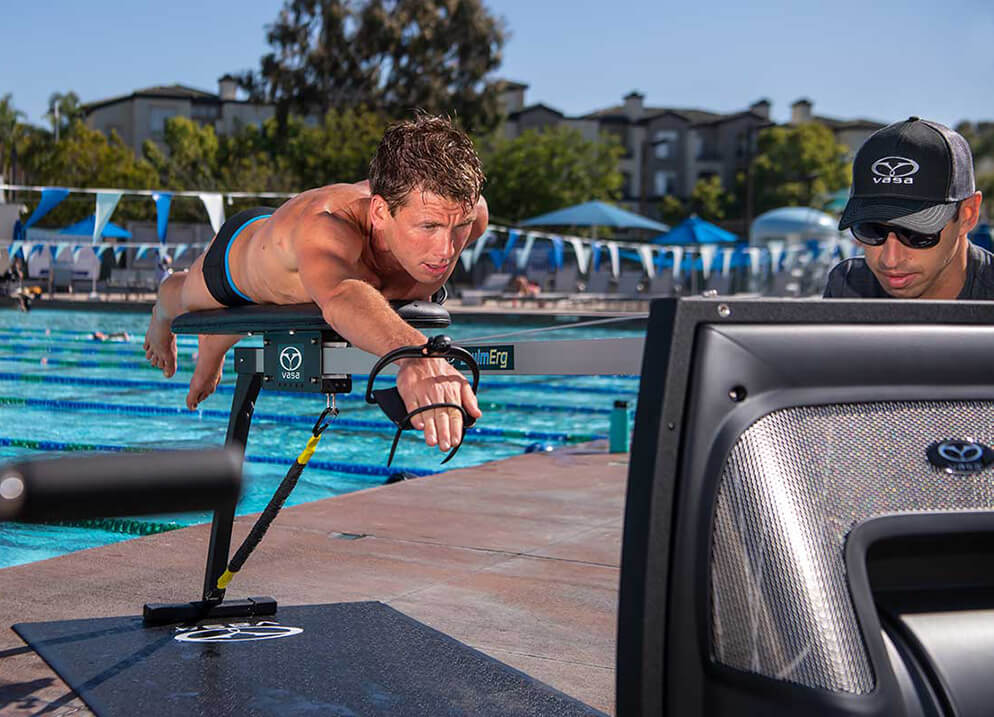
Injury happens. Sometimes it’s minor and other times quite significant. Perhaps you crash your bike and break your clavicle, get a gash & need stitches, or just get some bad road rash, each of which will keep you out of the pool. Some athletes get persistent ear infections, often called “swimmers ear.” Others wake up one morning to realize what was previously just a sore shoulder has morphed into full-blown overuse syndrome.
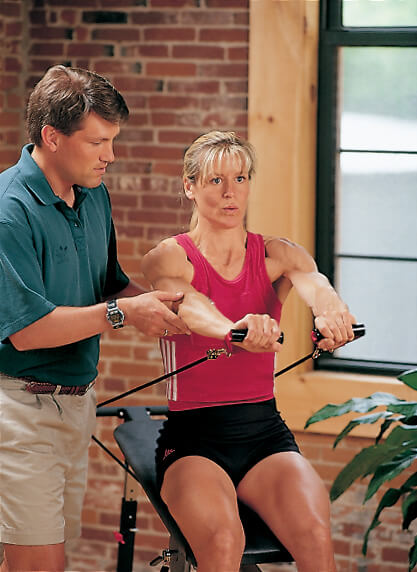
Physical therapy can help with injury recovery; Photo Courtesy: Vasa Trainer
Depending on what’s happened, an injury doesn’t necessarily mean you‘ll lose fitness while you heal, or that your season is over. There are a number of ways to manage injury to prevent it from being a short-term show-stopper or an end to the racing season.
As long as your injury still allows you to go in the water, swimming is often the best modality for recovery according to Eric Neilsen, who has been coaching swimmers & triathletes since 1991.
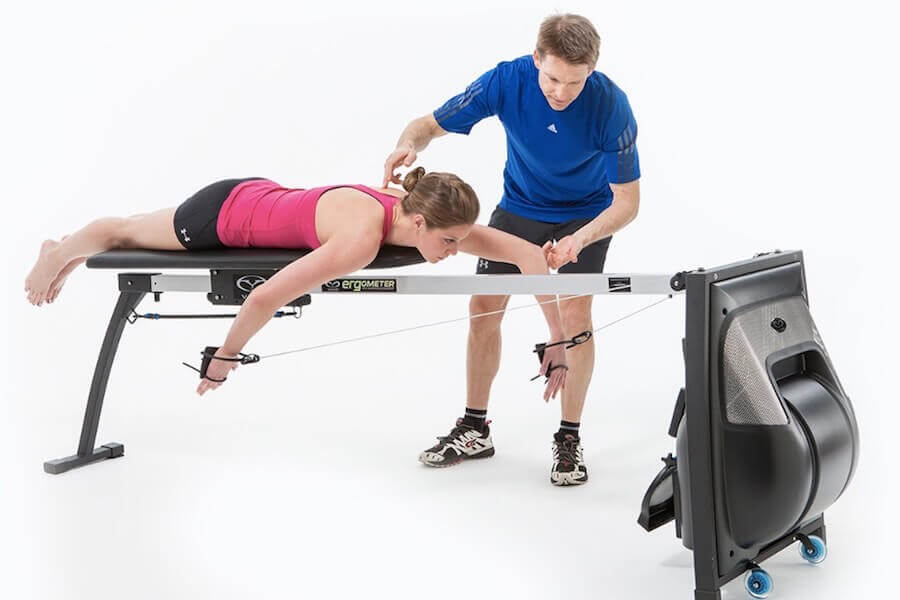
Just because you have an injury it doesn’t mean you will lose fitness while you heal. Photo Courtesy: Vasa Trainer
1. Don’t ignore a possible problem.
“Don’t get injured,” advises Sam Gydé, (pronounced He-day) a 44-year old Belgian age-group Ironman champion triathlete, who is also a full-time dispatcher for 20 fire stations.
It’s sound advice that’s not always easy to follow — some injuries happen by accident. And Gydé is spot on saying that many injuries can be prevented by paying attention and being proactive. “If you have an annoyance here or there,” says Gydé, “don’t ignore it, don’t run through the pain.”
Most injuries don’t come on suddenly. If you listen to your body, you’ll be aware of the signs that something is structurally wrong, or that you’re overdoing it on a particular activity. “Back off, see a physical therapist, deal with the thing that’s not quite right and you can often avoid a bigger problem,” says Gydé.
Neilsen advises using a Vasa SwimErg as a diagnostic tool to prevent injuries. “A SwimErg lets type A, data-driven guys watch their power as they try to balance left and right arms,” says Neilsen. ”After five minutes with no walls, no breaks, no flip turns, you know if someone has a strong posterior chain or not.”
2. Swim.
“If you’re relatively healthy, you can have great swim workouts even when you’re injured, either in the pool or while using a Vasa Swim Ergometer, which means with or without getting wet,” says Neilsen. When an athlete has an injury that keeps them out of the water, Nielsen trains them on a Vasa SwimErg and he gets significant positive results. By being forced to switch up their routine, athletes can maintain fitness or even get stronger, particularly if they take the opportunity to work on a weakness.
“Sometimes athletes actually recover from their injury and get in better shape because they’ve used a SwimErg to work out,” says Neilsen.
Team Vasa Tip: Learn how swimmer Zack Turk of Kenyon College did just that using the Vasa SwimErg in this VasaBlog Post | The Save-Your-Season Solution For Injured Swimmers.
“It’s one big pulling fest on the SwimErg, and it can make you feel so strong once you’re back in the water. It’s a massive cardio load,” says Neilsen.
3. Change your program if you injury is from overuse.
Dryland swim training can be helpful in preventing overtraining because it’s very concentrated quality work without thousands of repetitive strokes. That can be a key to mitigating overuse, the number one injury Neilsen encounters. Nielsen uses a swim ergometer to focus the athlete’s efforts on quality, efficient strokes. It removes the brief rest that a flip turn in a pool provides. He is able to push them physically without overtaxing their shoulders. Swimming on Vasa’s SwimErg is a concentrated effort that gives both athlete and coach reliable, repeatable metrics: meters, RPM, Power (L & R watts) and heart rate.
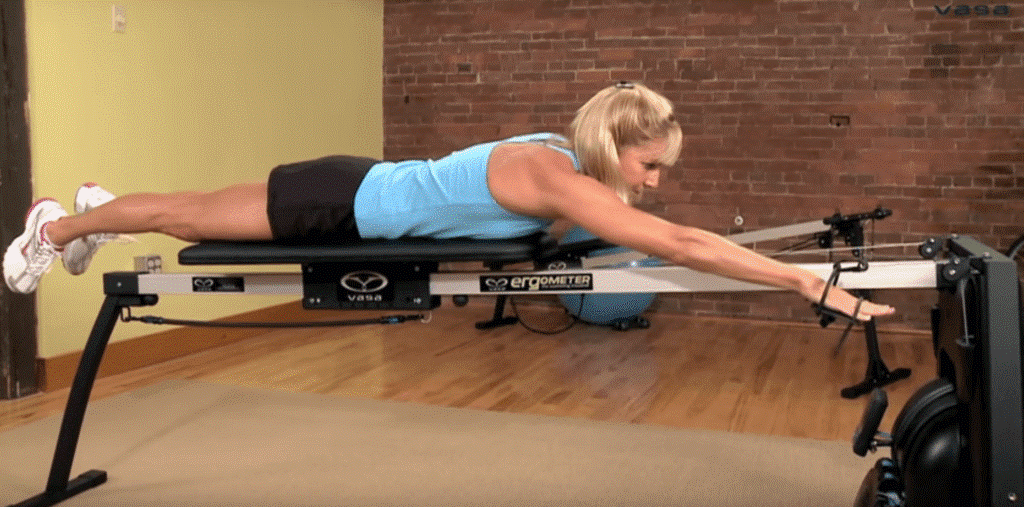
Dryland swim training can be helpful in preventing overtraining because it’s very concentrated quality work; Photo Courtesy: Vasa Trainer
“If a swimmer’s Freestyle stroke biomechanics are poor and they start to increase the load by swimming more distance, the injury potential goes way up,” says Neilsen. “With a swim erg, I can get an athlete who is prone to overtraining, take away their flip turn and it’s upper body go-time.”
When Neilsen is working with a swimmer who has a lower extremity injury and limited ability to be in the water, Vasa SwimErg workouts help the athlete maintain upper body fitness and meet target goals with stroke rate and power monitors.
4. If you get injured, learn from your mistakes.
That’s Gydé’s second piece of advice: take the time to understand how and why you got injured, what the warning signs were that you ignored, and then use the recovery from injury as a time to focus on improving something else.
“If it’s the offseason and you can’t run, put extra effort into swimming,” says Gydé. “If you’re injured in the buildup to a race, then choose a damage limitation strategy and find ways of cross training to maintain your fitness.
5. Build opposing muscles.
“Weak supporting muscles can be the cause of injury,” says Neilsen. “Oppositional exercises can help strengthen small muscle groups.”
According to Neilsen, oppositional exercises can also make an athlete feel stronger because it gives the athlete’s ‘primary movers’ a little break. “It’s like running backward,” says Neilsen. “In swimming, everything is straight ahead. But you need to work in all three plains of motion, transverse, frontal and straight for best fitness.”
In order to do that, Nielsen puts an athlete in a supine and sometimes a reverse position on a Vasa SwimErg. Instead of the athlete lying on their stomach and swimming in a standard freestyle motion, Nielsen has his athletes do drills while laying on their back.
He sets the machine’s resistance low. “We do dryland double-arm backstroke laying on the back with the head toward the front end of the machine. We also do lots of recovery stroke exercises on our stomachs with the head facing the rear of the machine,” says Neilsen. “When you’re swimming, you’re always pulling down. Reverse the position and you’re lifting up. It’s one of the best ways to strengthen opposing muscles.”
6. Get coached and gain insights.
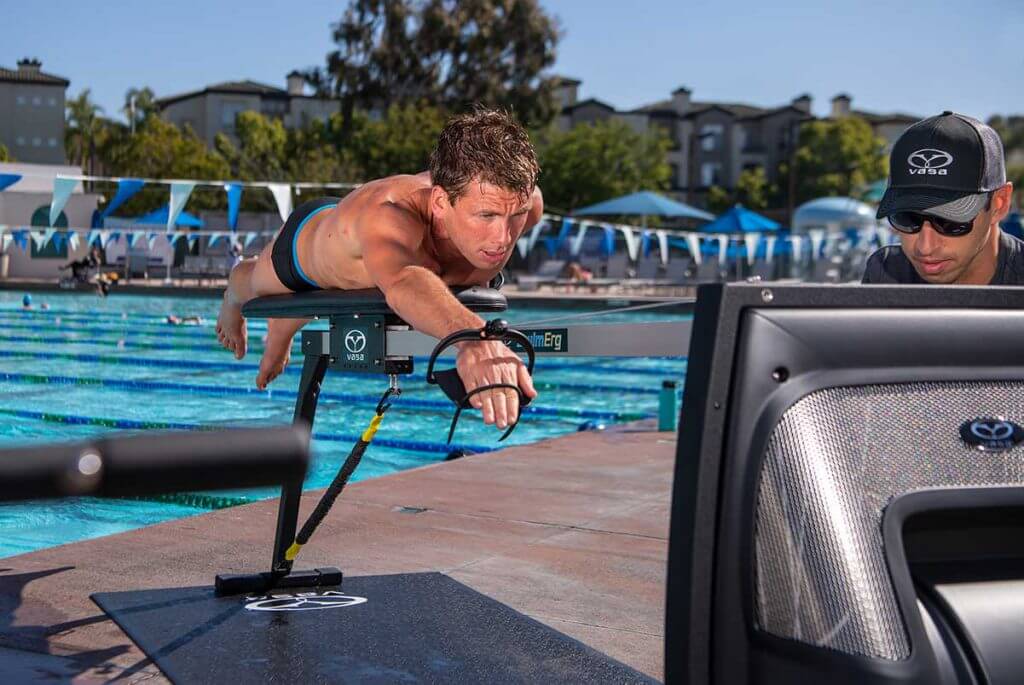
Coaches can use a Vasa Trainer on the pool deck to help monitor athlete form; Photo Courtesy: Vasa Trainer
As an athlete is rehabilitating using a Vasa SwimErg, the coach can observe the athlete’s stroke biomechanics and help them improve their technique.
“I watch an athlete swim on the erg, then I take my hands and start manipulating their arms to give them some cues on how to clean up their stroke biomechanics,” says Neilsen. “I train a lot using time. On the SwimErg, I can set up appropriate time-based intervals with rest to simulate how an athlete would train in the water.”
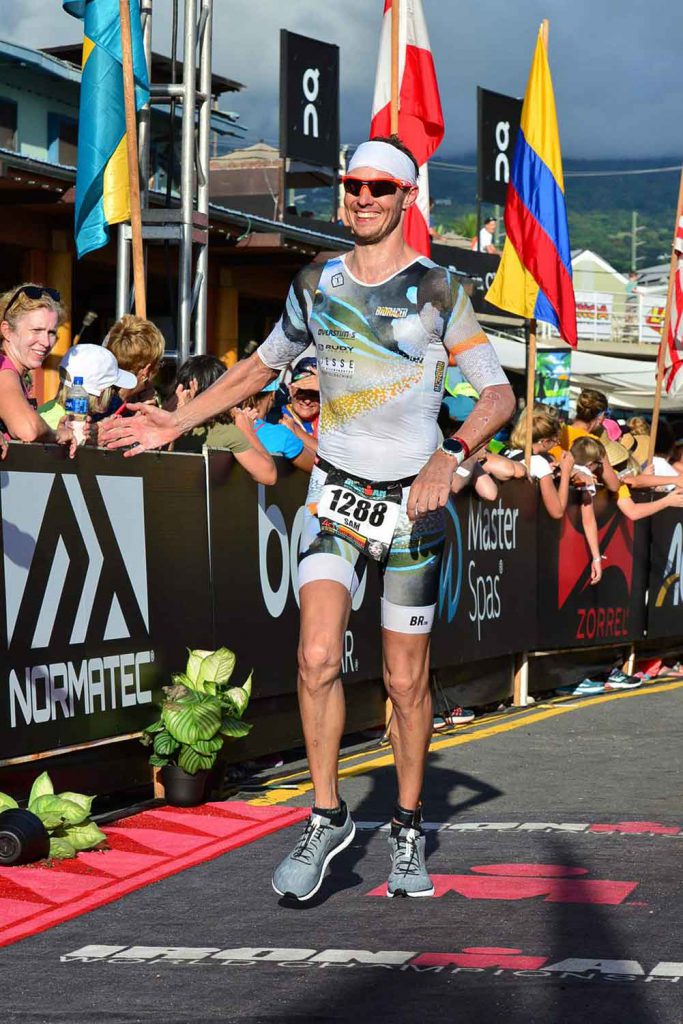
Ironman Sam Gydé says many injuries can be prevented by paying attention to your body. Most injuries don’t come on suddenly.; Photo Courtesy: Vasa Trainer
Like Gydé, Coach Neilsen says that an injury can be an opportunity to actually improve your skills. “You can help an injured athlete improve pace, says Neilsen. “With no walls or flip turns faor push-offs, it’s go-time for pure swim-specific pulling. Reality sets in about two and a half minutes after they start. It’s a hard-line measurement with stroke rate and power.”
7. Take the strain off.
Using low resistance on a Vasa SwimErg allows a swimmer to simulate stroke patterns even if they don’t have the ability to swim in the water. “You can increase resistance as an athlete regains range of motion,” says Neilsen. “You can alleviate gravity by turning down the resistance. You’re promoting blood flow and movement without strain, which is a good thing.”
Neilsen says that rehabilitating a running injury using the pool can be great. However, if you’re trying to get a non-swimmer moving again, and the motion of swimming is the best way to do that, the Vasa SwimErg is often the secret to success.
“The beauty of swim training on a SwimErg is that you can easily breathe all the time because there’s no chlorine or face in the water,” says Neilsen. “So you can take someone with zero swimming background, even a baseball player or volleyball athlete, and with a little bit of instruction they can get a great swim-specific workout without worrying about drowning.”
For some people, getting into a bathing suit can be intimidating. A SwimErg removes those hurdles. And for new swimmers, especially those with limited upper body strength, swim training on a Vasa lets them experience a load they may not yet be able to manage in the water.
8. Maintain a positive attitude
“My position in life is that there is always a positive and negative approach,” says Gydé. “You should always go for positive. Don’t cry over spilled milk. Injury sucks, so suck it up and find the best strategy to reach your goal.”
Eric Neilsen is a Masters Swim Coach & multisport coach from Loveland, CO. He’s competed in over 100 triathlons since 1986 and has been coaching swimmers & triathletes since 1991. Coach Neilsen coaches athletes worldwide on how training with the Vasa SwimErg, including technique instruction, training plans, and performance testing.
Eric’s athletic resume is impressive as well including being a:
- 3-time Ironman Hawaii World Championship Finisher
- 4-time 70.3 Ironman World Championship Qualifier
- 8-time Boston Marathon Qualifier
- Masters Swimming All-American.
For more info, go to www.coachericneilsen.com
Lesley Paterson is a dynamic off-road triathlete & coach who is fearless on the race course! As a three-time XTERRA World Champion, Lesley understands how to use physical & mental training to make emotional breakthroughs.
She’s a co-author of The Brave Athlete (with husband Simon Marshall, PhD.). Visit her website: Braveheart Coaching.
The above article was posted by Swimming World in conjunction with Vasa Trainer. For information about advertorial and advertising opportunities, please contact advertising@swimmingworld.com




This reads like an advertorial
Clearly an ad for the Vasa Trainer.